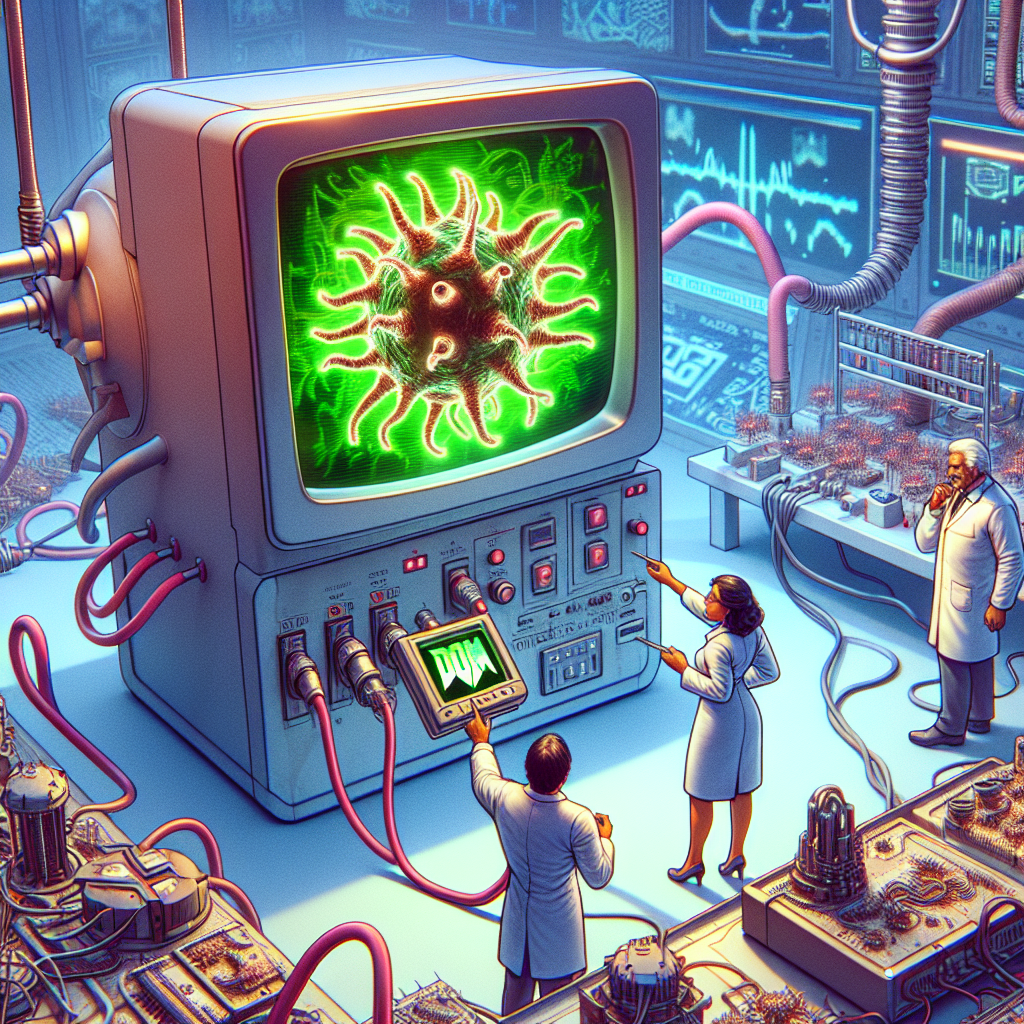Doom’s Legacy: Beyond Gaming into New Frontiers
The iconic game Doom has transcended its status as a mere video game to become a cultural touchstone, inspiring a dedicated community of modders and speedrunners who continually push the boundaries of what’s possible within its hellish landscapes. But beyond these traditional forms of engagement, Doom has sparked a playful and relentless challenge: to run the game on the most unlikely of devices. From the tiny screens of pregnancy tests to the interlocking plastic of Lego bricks, and even harnessing the bio-electric power of moldy potatoes, the quest to play Doom’s enduring appeal on non-traditional platforms has become a testament to human ingenuity and the game’s versatility as a game.
Doom on Bacteria-Powered Display
In a bold fusion of biology and gaming, Lauren Ramlam, a biology PhD student at the Massachusetts Institute of Technology (MIT), has proposed a novel concept: running Doom on a display powered by gut bacteria. The idea hinges on the use of fluorescent proteins to transform a colony of cells into a rudimentary screen. This bio-engineered display would consist of a grid of 32 by 48 cells, with each cell acting as an individual pixel in a black-and-white representation of the game’s visuals.
The process involves several steps:
- Compressing the visual frames of Doom to fit the limited resolution of the bacterial display.
- Identifying which pixels in the compressed frame are ‘on’ or ‘off’.
- Replicating this binary image using bacteria that either fluoresce to indicate an ‘on’ pixel or remain dark for an ‘off’ pixel.
Technical Challenges and Timeframe
Despite the innovative approach, Ramlam’s project faces significant technical hurdles, primarily due to the slow response time of the bacteria. The time it takes for the cells to fluoresce and then reset to their original state creates a substantial delay between frames.
This bottleneck in the display process results in a dramatically slower frame rate compared to the original game. Below is a comparison of the original Doom’s performance versus the projected performance on the bacteria-powered display:
| Original Doom | Bacteria-Powered Display |
|---|---|
| Framerate: 35 frames per second | Framerate: 1 frame every 8 hours and 20 minutes |
| Average playthrough time: ~5 hours | Projected playthrough time: ~599 years |
Conclusion: The Infinite Possibilities of Doom
Despite the current limitations, Lauren Ramlam is optimistic about the future of running Doom on a variety of platforms, including those powered by biological systems. She theorizes that advancements in the field could lead to a decrease in the time it takes for the bacteria to reset, thereby speeding up the display process. While the technology to make this a practical reality for gameplay is not yet available, the potential for growth in this area is evident.
The concept of a bacteria-powered display is a testament to the enduring legacy of Doom and its influence on technological innovation. Ramlam’s work continues to push the boundaries of what’s possible, ensuring that the spirit of Doom will live on in the most unexpected of mediums—even if it may take over half a millennium to come to fruition.

